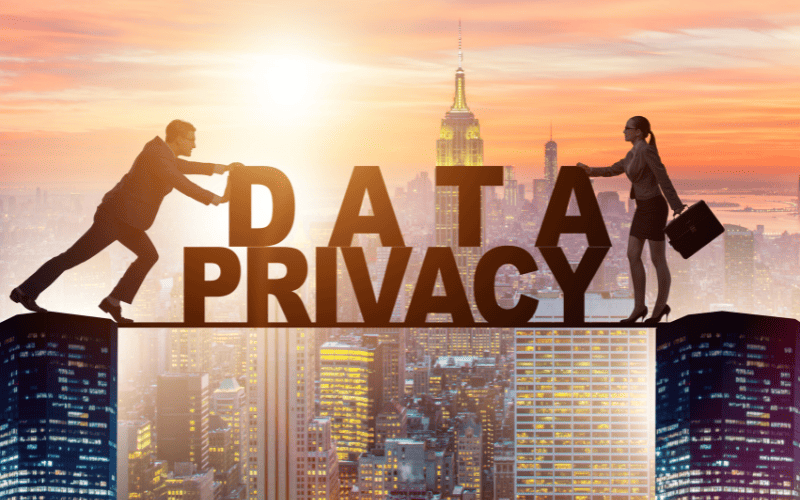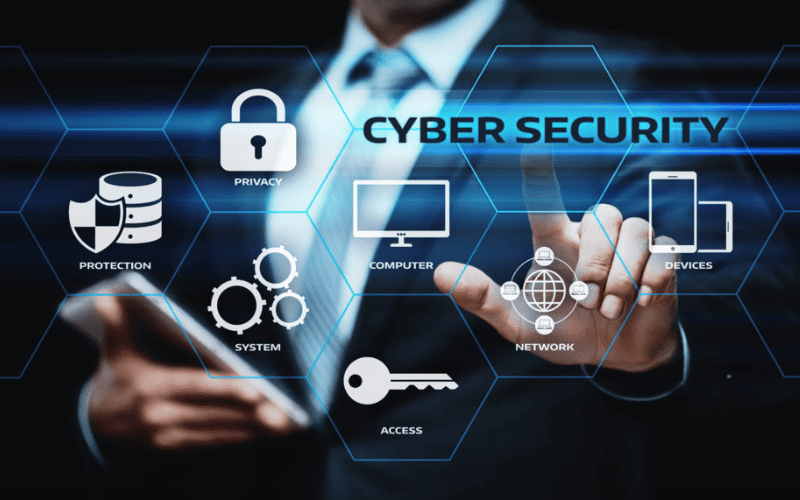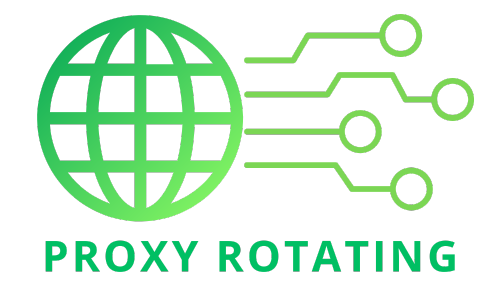In the digital age, data privacy vs cybersecurity has become crucial for protecting personal information and securing online environments. Data privacy focuses on the right to control how personal information is collected, used, and shared, emphasizing the importance of consent, access, and transparency. Cybersecurity, however, involves safeguarding computer systems and networks from unauthorized access or attacks, aiming to protect data, devices, and digital assets from threats like malware, phishing, and cyber-attacks. Both fields are vital in today’s interconnected world, where digital transactions and communications are commonplace. They ensure that individuals’ privacy is respected and that businesses and organizations can operate securely in the digital landscape, protecting them against financial and reputational damage and fostering trust in digital transactions and services.
Concepts of Data Privacy vs Cybersecurity
Data privacy and Cybersecurity are critical, but how can we better understand these concepts? Let’s take a closer look with some specific examples:
Data privacy
Data privacy concerns individuals’ ability to manage how their personal information is collected, utilized, and distributed. This concept is grounded in the principle of consent, ensuring that individuals are informed and have a say in how organizations or websites handle their data.
Examples of data privacy rights include the ability to access personal information held by an organization, the power to edit or update that information if it is inaccurate, the option to delete personal data under certain conditions, and the right to restrict the use of personal data, such as opting out of marketing communications. These rights empower individuals to protect their privacy and control their digital footprint, making data privacy a fundamental aspect of digital rights and security in the modern world.
Cybersecurity
Cybersecurity protects computer systems, networks, and data from digital attacks, unauthorized access, or damage. Its primary aim is to ensure information integrity, confidentiality, and availability. Cybersecurity encompasses various measures and technologies to safeguard data from malware, ransomware, phishing attacks, and hacking. This field is crucial for individuals, businesses, and governments, covering everything from securing personal devices and sensitive information to protecting critical national infrastructure.
Effective cybersecurity strategies involve multiple layers of protection spread across the computers, networks, programs, or data one intends to keep safe. Within an organization, the people, processes, and technology must work together synergistically to form robust protection against cyber threats. Critical practices include:
- Using antivirus software.
- Firewalls.
- Intrusion detection systems.
- Encryption techniques.
We are establishing secure protocols for accessing and sharing information.
Additionally, cybersecurity awareness and training are vital for users to recognize and adequately respond to security threats, ensuring that personal and organizational data remains secure in the rapidly evolving digital landscape.

Differences between Data privacy vs Cybersecurity
While often used interchangeably, data privacy and Cybersecurity focus on different aspects of information protection in the digital age. Understanding their objectives, scope, protection methods, and governing laws highlights their distinct roles in safeguarding digital information.
| Characteristics | Data Privacy | Cybersecurity |
| Objective | It aims to protect individuals’ personal information and ensure their right to control how it is collected, used, and shared. | It protects computer systems, networks, and data from unauthorized access, attacks, or damage to ensure data integrity, confidentiality, and availability. |
| Scope | I am concerned with personal information (such as names, addresses, and financial details) and individuals’ rights regarding their data. | Encompasses the protection of all types of data (personal, sensitive, proprietary) from cyber threats across all types of digital platforms and systems. |
| Protection methods | It involves policies and practices, such as data minimization, consent management, data access controls, and encryption, specifically to protect personal data. | Employs a broader range of technical measures and strategies such as firewalls, antivirus software, intrusion detection systems, and secure network architectures to protect against cyber threats. |
| Laws | It is governed by laws and regulations specifically addressing data protection and individual privacy rights, such as the General Data Protection Regulation (GDPR) in Europe, the California Consumer Privacy Act (CCPA), and other national data protection laws. | It is regulated by laws and standards focusing on computer systems and data security, including the Cybersecurity Information Sharing Act (CISA) in the U.S., the Network and Information Systems Directive (NIS Directive) in the EU, and other cybersecurity-specific regulations. |
In summary, data privacy is centered on the rights and protections of personal data related to individuals, emphasizing consent and control over personal information. In contrast, Cybersecurity focuses on protecting all data from external threats and breaches, employing technical measures to secure systems and networks against cyber attacks. Both fields are complementary and essential in the digital landscape to ensure the comprehensive protection of digital information and assets.
Why is Data privacy vs Cybersecurity important?
Data privacy and Cybersecurity are fundamental in today’s digital age for several compelling reasons:
Importance of data privacy
- Personal autonomy: Data privacy upholds an individual’s right to control their personal information, reflecting the respect for personal freedom in the digital sphere.
- Trust and confidence: Ensuring privacy builds trust between users and services, which is essential for the healthy operation of digital economies and online social interactions.
- Compliance and legal obligations: With global regulations like GDPR and CCPA, data privacy compliance is legally required, helping avoid hefty fines and legal issues.
- Prevention of misuse: Protecting personal data prevents misuse, such as identity theft, financial fraud, and unauthorized tracking or profiling.
Importance of Cybersecurity
- Protection against threats: Cybersecurity measures protect against a wide range of threats, including malware, phishing attacks, and data breaches, which can have devastating consequences.
- Economic stability: Cyber attacks can lead to significant financial losses for individuals and organizations, impacting the broader economy. Effective Cybersecurity helps safeguard economic stability.
- Confidentiality of sensitive information: Keeping sensitive information, from personal data to national security secrets, is crucial for safety and privacy.
- Continuity of services: Cybersecurity ensures the continuity of services, particularly critical infrastructure and essential online services, protecting them from disruptions or sabotage.
The interconnectedness of data privacy and Cybersecurity underscores their collective importance in securing not just the digital domain but also supporting the foundational aspects of personal dignity, economic stability, national security, and societal trust. Together, they create a safer digital environment that enables innovation and growth while protecting individuals and the collective against evolving digital threats.
Benefits of Combining Data Privacy and Cybersecurity
Combining data privacy and cybersecurity offers significant benefits that can protect an organization’s operations and its reputation. Here’s a concise overview of the key advantages you mentioned:
Prevent Data breaches: Integrating cybersecurity and data privacy practices minimizes vulnerabilities and risks, preventing unauthorized access and leaks of sensitive data. This proactive approach reduces the chances of costly breaches that can harm the organization and its stakeholders.
Build customer trust: Organizations can enhance their credibility by committing to securing and respecting customer data. This trust is crucial for customer retention and can differentiate a business in competitive markets where consumers are increasingly privacy-conscious.
Stay GDPR compliant: GDPR compliance is mandatory for organizations operating in or handling data from the European Union. Combining data privacy and cybersecurity measures ensures the organization adheres to these stringent regulations, avoiding fines and penalties.
Protect revenue: Data breaches and privacy violations can lead to direct financial losses through fines, litigation, and remediation costs. They can also cause indirect losses via damaged reputation and lost business. A robust combination of privacy and cybersecurity practices protects revenue by mitigating these risks.
By focusing on these aspects, organizations safeguard their data and systems, strengthen their market position, and ensure sustainable growth.
How do compliance and malicious activities affect cybersecurity and data privacy?
Compliance and malicious activities are critical factors that significantly impact cybersecurity and data privacy. Here’s how they influence these areas and the strategies that can be employed to combat cyber threats and ensure data privacy:
Compliance with Data Privacy regulations
- Impact: Compliance ensures organizations adhere to legal and regulatory frameworks to protect personal data. This adherence is crucial for preventing data breaches and unauthorized access.
- Strategies: Implementing comprehensive data protection policies, regular audits, and employee training on data privacy laws (like GDPR, HIPAA, or CCPA). Also, deploying data governance frameworks that classify data based on sensitivity and ensure proper handling as per legal standards.
The impact of malicious cyber activities on data security
- Impact: Malicious activities, such as hacking, phishing, ransomware attacks, and other cyber threats, directly threaten the integrity, availability, and confidentiality of data. These activities can lead to significant data breaches, loss of sensitive information, and disruption of operations.
- Strategies: Employing advanced security measures such as firewalls, intrusion detection systems (IDS), encryption, and multi-factor authentication (MFA). Regularly updating and patching software and systems to mitigate vulnerabilities. Implementing a robust incident response plan to address and reduce the effects of a cyber attack quickly. Regularly update and patch software and systems to reduce vulnerabilities. Implementing a robust incident response plan to address quickly
Strategies to combat cyber threats and ensure data privacy:
- Proactive monitoring and detection: Using sophisticated monitoring tools to detect unusual activities or potential breaches early. This involves continuous monitoring of network traffic and system logs.
- Data encryption: Encrypting data at rest and in transit protects sensitive information from unauthorized access. Encryption is a critical layer of defense that renders data useless even if it falls into the wrong hands.
- Employee training and awareness: Conduct regular training sessions to educate employees about the latest cyber threats and phishing tactics. Employees should be aware of the proper handling of personal and sensitive data.
- Regular security assessments and penetration testing: Conduct periodic security assessments and penetration testing to identify and address vulnerabilities in the IT infrastructure.
Data minimization and access controls: Adhering to the principle of least privilege and data minimization to reduce exposure to risks. Access to sensitive data should be restricted based on roles and the minimum data necessary for operational purposes.
By focusing on these strategies, organizations can effectively manage the risks associated with compliance and malicious activities, ensuring robust cybersecurity and data privacy practices.

Examples of Data privacy vs Cybersecurity breaches
Data privacy and Cybersecurity breaches impact individuals and organizations differently, highlighting the unique concerns of each field:
Data privacy violations examples:
- Personal information leaks are instances where sensitive personal information, such as credit card details or medical records, is accidentally exposed or leaked due to inadequate data protection measures. A notable example is the Equifax data breach in 2017, which exposed the personal information of approximately 147 million people.
- Unauthorized use of personal data: When personal data is used without consent for purposes such as targeted advertising or marketing. An example includes the Facebook-Cambridge Analytica scandal, where the personal data of millions of Facebook users was harvested without consent for political advertising.
- Online behavior tracking collects and analyzes data regarding individuals’ online activities without informed consent, often for profiling and targeted advertising. Various websites and platforms that track user behavior extensively have been concerned about this.
Cybersecurity violations examples:
- Network attacks target networks or systems to steal data, disrupt services, or cause damage. An example is the WannaCry ransomware attack in 2017, which affected hundreds of thousands of computers worldwide and disrupted healthcare services, among other things.
- Malware is software crafted maliciously to harm or illicitly penetrate computer systems. The NotPetya malware attack 2017 caused billions of dollars in damage to organizations worldwide by exploiting vulnerabilities to spread malware that encrypted hard drives.
- Data theft is the unauthorized access to and theft of data from individuals or organizations. The Yahoo data breaches, disclosed in 2016 but occurring in 2013 and 2014, affected all 3 billion Yahoo accounts, making them one of the most significant cybersecurity breaches in history.
These examples underline the importance of robust Data privacy and Cybersecurity measures to protect against unauthorized access and misuse of personal information and safeguard data integrity and confidentiality in the digital age.
Tips for protecting your privacy & security
Protecting your privacy and security in the digital age is essential. Here are some practical tips you can follow to safeguard your personal information and enhance your security both online and offline:
Use strong, unique passwords
Create complex passwords that combine letters, numbers, and special characters. Avoid using the same password across multiple sites. Consider using a password manager to keep track of your passwords securely.
Enable Multi-Factor Authentication (MFA)
Whenever possible, enable MFA. This adds a layer of security by requiring two or more verification methods to gain access to your online accounts, which can significantly reduce the risk of unauthorized access.
Update software regularly
Keep your operating system, applications, and devices updated. Software updates often include patches for security vulnerabilities that attackers could exploit.
Be wary of Phishing scams
Learn to identify phishing emails or messages that trick you into giving away personal information like passwords or credit card numbers. Be cautious about clicking on links in unsolicited emails or messages.
Limit personal information on social media
Be mindful of the personal information you share on social media platforms. Adjust your privacy settings to control who can see your posts and personal details.
Use secure Wi-Fi connections
Avoid using public Wi-Fi for sensitive transactions. If you must use public Wi-Fi, use a Virtual Private Network (VPN) to encrypt your internet connection, which protects your data from eavesdroppers.
Encrypt sensitive data
Use encryption to protect sensitive data stored on your devices or transmitted online. This makes it much harder for someone to access your data if your device is lost or stolen.
Secure your devices
Secure your devices with security features like lock screens, passcodes, and biometric locks (fingerprint or facial recognition).
Regularly review account statements and credit reports
Check your bank statements, credit card statements, and credit reports regularly for unauthorized transactions or accounts you don’t recognize, which could indicate identity theft.
Educate yourself and others
Stay informed about the latest security threats and privacy issues. Share this knowledge with friends and family to help them protect themselves.
These tips can significantly improve your personal data privacy and enhance security against online and offline threats.

In summary, the article has provided essential information that allows readers to differentiate between data privacy vs Cybersecurity. They create a safer digital environment that enables innovation and growth while protecting individuals and the collective against evolving digital threats. Protecting both areas is necessary to safeguard oneself and organizations from cyber threats. For more helpful information, visit https://proxyrotating.com/ and join us in exploring Cybersecurity, data privacy, and more.
>> See more:
Data privacy governance framework
